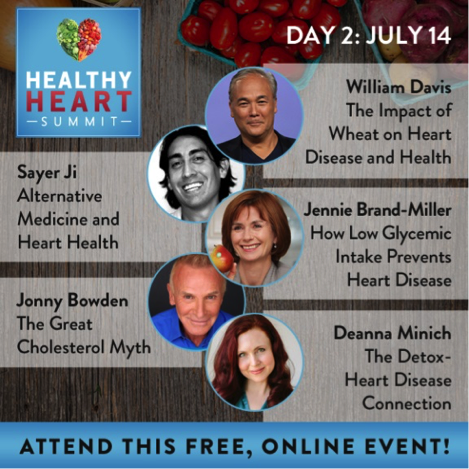What are the symptoms of an allergic reaction?
When someone comes in contact with an allergen, the symptoms of a reaction may develop quickly and rapidly progress from mild to severe. The most severe form of an allergic reaction is called anaphylaxis. Symptoms can include breathing difficulties, a drop in blood pressure or shock, which may result in loss of consciousness and even death. A person experiencing an allergic reaction may have any of the following symptoms:
Flushed face, hives or a rash, red and itchy skin
Swelling of the eyes, face, lips, throat and tongue
Trouble breathing, speaking or swallowing
Anxiety, distress, faintness, paleness, sense of doom, weakness
Cramps, diarrhea, vomiting
A drop in blood pressure, rapid heartbeat, loss of consciousness
How are food allergies and severe allergic reactions treated?
Currently there is no cure for food allergies. The only option for managing the risk is to completely avoid the specific allergen. Appropriate emergency treatment for anaphylaxis (a severe food allergy reaction) includes an injection of epinephrine, which is available in an auto-injector device. Epinephrine must be administered as soon as symptoms of a severe allergic reaction appear. The injection must be followed by further treatment and observation in a hospital emergency room. If your allergist has diagnosed you with a food allergy and prescribed Epinephrine, carry it with you all the time and know how to use it. Follow your allergist's advice on how to use an auto-injector device.
Frequently asked questions about sulphite sensitivity
What are Sulphites?
Sulphites are substances that naturally occur in some foods and the human body. They are also regulated food additives that are used as preservatives to maintain food colour and prolong shelf-life, prevent the growth of microorganisms, and to maintain the potency of certain medications. Sulphites are used to bleach food starches (e.g. potato) and are also used in the production of some food packaging materials (e.g. cellophane).
The sulphites that can be added to foods in Canada are potassium bisulphite, potassium metabisulphite, sodium bisulphite, sodium dithionite, sodium metabisulphite, sodium sulphite, sulphur dioxide and sulphurous acid. These can also be declared using the common names sulfites, sulphites, sulfiting agents or sulphiting agents.
Are sulphites safe to eat?
Yes, for the majority of consumers. However, some sulphite-sensitive people, many of whom also have asthma, may react to sulphites with allergy-like symptoms. Sulphites can trigger asthma and symptoms of anaphylactic reaction.
I have a sulphite sensitivity. How can I avoid a sulphite-related reaction?
Avoid all food and products that contain sulphites and sulphite derivatives. These include any product whose ingredient list warns it "may contain" or "may contain traces of" sulphites and sulphite derivatives.
Can I have a sulphite-related reaction even if I do not eat a food or use a product that contains sulphites or sulphite derivatives?
Yes. There have been reported reactions to inhaled sulphites; however, not from food itself. If sulphites and sulphite derivatives are not present in food, a reaction cannot occur. However, sulphites and sulphite derivatives can often be present under different names, e.g., potassium bisulphite. For other common ingredient label names, refer to the list below. Always read the ingredient list carefully.
What do I do if I am not sure whether a product contains sulphites or sulphite derivatives?
If you have a sulphite sensitivity, do not eat or use the product. Get ingredient information from the manufacturer.
Does product size affect the likelihood of an allergic reaction?
Product size does not affect the likelihood of a reaction; however, the same brand of product may be safe to consume for one product size but not another. This is because product formulation may vary between different product sizes of the same product.
Avoiding sulphites and sulphite derivatives
Make sure you read product labels carefully to avoid products that contain sulphites and sulphite derivatives. Certain medications contain sulphites, yet are safe for and may be used by sulphite-sensitive people as directed by an allergist. Avoid food and products that do not have an ingredient list and read labels every time you shop. Manufacturers may occasionally change their recipes or use different ingredients for varieties of the same brand.
Refer to the following list before shopping:
Other names for sulphites
In the past, some products have used other names for sulphites on their labels. These names are not permitted based on the enhanced labelling requirements for food allergens, gluten sources and added sulphites, however, if you have a sulphite sensitivity and see one of the following in the list of ingredients on a product you should not eat it.
E 220, E 221, E 222, E 223, E 224, E 225, E 226, E 227, E 228 (European names)
Food and products that often contain sulphites
Alcoholic and non-alcoholic beer and cider
Bottled lemon and lime juices and concentrates
Canned and frozen fruits and vegetables
Cereal, cornmeal, cornstarch, crackers and muesli
Condiments, for example, coleslaw, horseradish, ketchup, mustard, pickles, relish and sauerkraut
Dehydrated, mashed, peeled and pre-cut potatoes, and frozen french fries
Dried fruits and vegetables, such as apricots, coconut and raisins, sweet potato
Dried herbs, spices and teas
Fresh grapes
Fruit fillings and syrups, gelatin, jams, jellies, preserves, marmalade, molasses and pectin
Fruit and vegetable juices
Glazed and glacéed fruits, for example, maraschino cherries
Starches, (for example, corn starch, potato starch)
Sugar syrups, for example, glucose, glucose solids, syrup dextrose, corn syrup, table syrup
Tomato pastes, pulps and purees
Vinegar and wine vinegar-(olives or other vegetable in vinegar)
Coconut milk, coconut milk powder, dried coconut
Wine
Other possible sources of sulphites
Baked goods, especially with dried fruits
Deli meats, hot dogs and sausages
Dressings, gravies, guacamole, sauces, soups and soup mixes
Fish, crustaceans and shellfish
Granola bars, especially with dried fruit
Noodle and rice mixes
Snack foods, for example, raisins, fruit salad
Soy products
Non-food sources of sulphites
Bottle-sanitizing solutions for home brewing
Cellophane
(supplements- in the form of sulphur dioxide or other name)
Note: These lists are not complete and may change. Food and food products purchased from other countries, through mail-order or the Internet, are not always produced using the same manufacturing and labelling standards as in Canada.
What can I do?
Be informed
See an allergist and educate yourself about food allergies. Contact your local allergy association for further information.
If you or anyone you know has food allergies or would like to receive information about food being recalled, sign up for the Canadian Food Inspection Agency's (CFIA)
 free e-mail "Food Recalls and Allergy Alerts"
free e-mail "Food Recalls and Allergy Alerts" notification service. When you sign up you will automatically receive food recall public warnings.
Before eating
Allergists recommend that if you do not have your auto-injector device with you that you do not eat. If the label indicates that a product "contains:" or "may contain:" sulphite or sulphite derivatives, do not eat it. If you do not recognize an ingredient or there is no ingredient list available, avoid the product.
Watch out for allergen cross contamination!
Cross contamination is the transfer of an ingredient (food allergen) to a product that does not normally have that ingredient in it. Through cross contamination, a food that should not contain the allergen could become dangerous to eat for those who are allergic.
Cross contamination can happen:
- during food manufacturing through shared production and packaging equipment;
- at retail through shared equipment, e.g., cheese and deli meats sliced on the same slicer;
- and through bulk display of food products, e.g., bins of baked goods, bulk nuts; and
- during food preparation at home or in restaurants through equipment, utensils and hands.
To Your Health
















